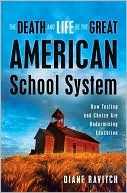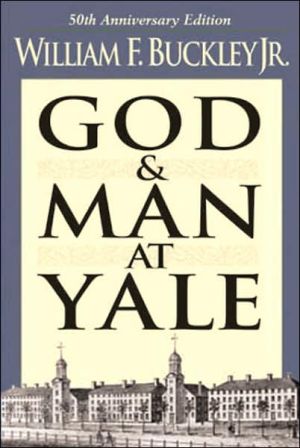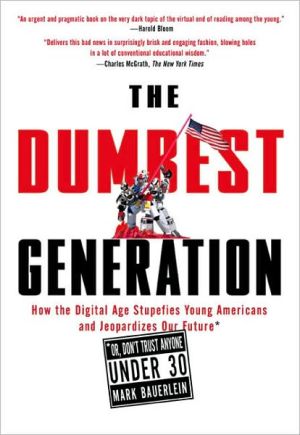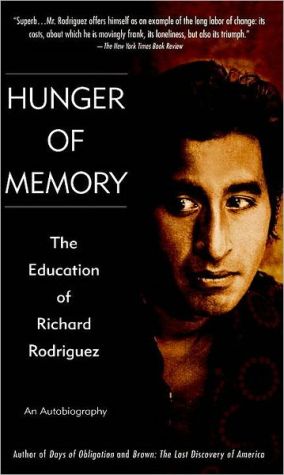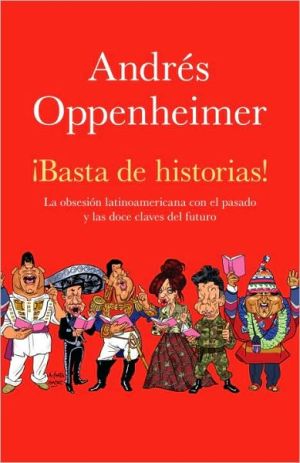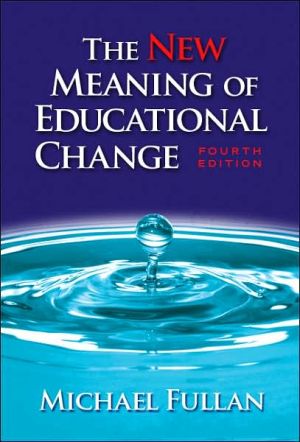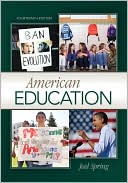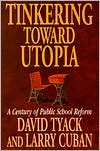Restoring Free Speech and Liberty on Campus
This book deals with the decline of respect for free speech, academic freedom, and civil liberty that has swept higher education in America over the last decade and a half and with what needs to be done to reverse this trend. Drawing on personal experience as well as research, Downs analyzes the origins and development of the problem, and shows how political organization of students and faculty can lead to constructive change. He presents four case studies that illustrate this thesis.
Search in google:
The decline of respect for free speech, academic freedom, and civil liberty in American universities.
\ Cambridge University Press\ 0521839874 - Restoring Free Speech and Liberty on Campus - by Donald Alexander Downs\ Excerpt\ \ \ \ \ PART I\ \ INTRODUCTION AND BACKGROUND\ \ \ \ \ \ \ \ \ I\ \ The Return of the Proprietary University\ The New Politics of Free Speech and Civil Liberty\ \ \ \ The lore of history has indelibly linked three words in the public's imagination: "free speech" and "Berkeley." The free speech movement (FSM) at Berkeley witnessed the rise of a mass student mobilization and the first illegal takeover of a campus building - Sproul Hall - in United States history. FSM was the fountainhead of modern student political activism. And at its inception in the 1960s, it was all about free speech - at least in theory.\ FSM was originally motivated by the desire to win for students the same rights of free speech and expression that citizens enjoyed in the world outside the realm of academe. This objective later blossomed into a broader movement in American higher education that eliminated or cut back in loco parentis policies, which curtailed student freedoms on the grounds that college students are not yet prepared to assume the full rights and responsibilities of adults.1 The first major target of student protest at Berkeley was the wall of separation that University of California authorities had erected between politics and the university. In the 1930s University of California president Robert Sproul initiated policies banning such activities as the use of university buildings for holding partisan political exercises. By 1964 students were not permitted to solicit for political purposes or to hand out materials "distributed on University property to urge a specific vote, call for direct social or political action, or to seek to recruit individuals for such action."2 A 1944 restatement of Sproul's 1936 prohibition expressed the philosophy behind the policy succinctly:\ The function of the University is to seek and to transmit knowledge and to train students in the processes whereby truth is to be made known. To convert, or to make converts, is alien and hostile to this dispassionate duty....The University is founded upon faith in intelligence and knowledge and it must defend their free operation....Its obligation is to see that the conditions under which questions are examined are those which give play to intellect rather than to passion.3\ Sproul's policy was not dismissive of free speech and inquiry as principles. On the contrary, it was intended, however naively, to protect these goods in the university context from outside forces. Political activists pursue causes, not truth, pitting them in some fundamental sense at odds with the pursuit of truth. Truth has a way of being inconvenient to any cause. As Hannah Arendt wrote, "it may be in the nature of the political realm to be at war with truth in all its forms...a commitment even to factual truth is felt to be an anti-political attitude."4\ The University of California's policy was premised on some key liberal assumptions about the nature of knowledge and the function of the university, assumptions that had held sway since the rise of major research universities in the nineteenth century. These assumptions included the belief that truth and reason are in some fundamental sense distinct - however imperfectly - from such forces as passion, power, and history; and that the university's primary mission is to ensure the academic freedom of properly trained professors and their students. In its most advanced incarnations, the liberal concept of the university embodies a commitment to "cognitive rationality" and "radical individualism," and to the idea of the university as a special, relatively autonomous space where "the cultivation of rational thought and analysis" is valued more than in the outside world.5\ But the post-World War Ⅱ era unleashed forces that would tear down the wall of separation between truth and politics at Berkeley and elsewhere. New political and moral obligations cried out for attention, beckoning students to make the university more relevant to society. The civil rights and other progressive movements brought the problems of racism, poverty, and oppression to the fore, while economic and corporate expansion made American life appear more impersonal and less authentic in many students' eyes. Forces swept through universities that rendered the separation of truth's pursuit and politics seem quaint, if not hypocritical. During the 1950s universities across the land succumbed to loyalty oath controversies and other disputes thrust upon them by McCarthyism. The University of California was afflicted with one of the most intense loyalty oath conflicts, threatening the very viability of Berkeley as an institution. UC president Clark Kerr managed to avert disaster by painstakingly forging a compromise that included the firing of more than one hundred faculty members who were or had been members of the Communist Party, while retaining faculty members who refused to sign the oath simply out of principle.6\ More broadly, the very complexion of higher education was undergoing a radical transformation. Universities had evolved into what Kerr christened the "multiversity" in a famous book: a large, impersonal, bureaucratic institution without a soul or central mission, a land where faculty research and grants take precedence over the commitment to undergraduate teaching.7 The multiversity was awash in military research and other work servicing the corporate state. In addition to targeting free speech policy, FSM turned its wrath on what it considered the moral impoverishment of the modern university as an institution. As FSM leader Mario Savio proclaimed in a famous speech, "There is a time when the operation of the machine becomes so odious, makes you so sick at heart, that you can't take part....You've got to put your bodies upon the gears and upon the wheels, the levers, upon all the apparatus, and you've got to make it stop."8\ But it was a seemingly minor deed that broke the dike protecting the university from the politics outside. The fall of 1964 was marked by increased student activism in the name of civil rights, social justice, and peace. It also happened to be the time that the university learned that a twenty-six-foot sidewalk area in front of the entry to the campus at the intersection of Bancroft Way and Telegraph Avenue belonged not to the city of Berkeley - as the university had long assumed - but rather to the university itself. In response to this discovery, the university promptly applied its rules against political solicitation and advocacy to the area for the first time. Student political activists were not pleased, as Robert Post relates. "The yawning disparity between freedom of speech as enjoyed by citizens and freedom of speech as defined within the institutional confines of the University was thus starkly exposed."9 Student activists and a handful of faculty founded FSM in the name of classic libertarian ends: to tear the wall of differential treatment down in the name of free speech and equal civil liberties. A key FSM platform declared that "civil liberties and political freedoms which are constitutionally protected off campus must be equally protected on campus for all persons....The Administration may not regulate the content of speech and political conduct."10\ But like most powerful political movements, FSM was complicated and tapped the full range of human motivation and aspiration. Its libertarian side reached out to those with a thirst for knowledge, moral commitment, and meaning. A less libertarian side appealed to communitarian impulses that were not always consistent with individual conscience. The movement was torn between the libertarian and moralistic impulses that Paul Berman analyzes in his book on political movements inspired by the student upheavals of the 1960s, A Tale of Two Utopias. Berman draws a line between movements bent on "moral reform" and those devoted to expanding the franchise, citizenship, and liberty. The latter comprised the "movement for political and cultural enfranchisement," which has historically included labor, abolitionism, civil rights, the women's movement, and the gay and lesbian movements. Moral reform movements, however, have too often degenerated into coercion and authoritarianism. Liberty movements are ultimately more successful and humane because they simply strive to expand the benefits of freedom to individuals and groups previously excluded by prejudice. Liberty movements are principally "campaigns to lead one sector of society after another upward from the gloom of bottom-place standing in the social hierarchy into the glorious mediocrity of the American middle class."11\ Free speech was important to FSM but mainly as the vehicle by which to address more substantive political concerns, including the nourishment of solidarity.12 In "We Want a University," a manifesto dedicated to the students who took over Sproul Hall to further the cause, the authors (calling themselves the "free speech movement") announced their commitment to a new kind of "loving community." Their language echoed the romantic ideas of such antilibertarian critics of alienated bourgeoisie society as Rousseau, Marx, Weber, Durkheim, Tönnies, and Heidegger:\ Although our issue has been free speech, our theme has been solidarity. When individual members of our community have acted, we joined together as a community to jointly bear the responsibility for their actions. We have been able to revitalize one of the most distorted, misused, and important words of our century: comrade....\ For a moment on December 8, eight hundred and twenty-four professors gave us all a glimpse - a brief, glorious vision of the university as a loving community.13\ Many FSM activists yearned for an intense educational experience that moved the mind and the soul. But their commitment to solidarity, comradeship, and organic community also contained elements that could smother individual independence of mind. Before long, part of the FSM ideal led to an insistence on the "right politics" rather than to freedom as a means to attain knowledge and individualistic self-discovery. In an interview, one of the four original faculty advisers to FSM, renowned Berkeley philosopher John Searle, related that things began to turn "within six months": "We won in December [1964] and in the following semester, by September, there was no question the situation had deteriorated. What happened is very simple and I'm sure it's a permanent feature of protest movements. Namely, to the extent that they are successful, they are taken over by the extreme elements. The moderate liberal students went back to their studies and the radicals got control."14 As the 1960s wore on, free speech itself began to suffer at the hands of political causes. Opinions deemed detrimental to preferred political causes encountered problems in the public forum. As Searle observed, "There were periods when it was really bad. If you were in favor of the war in Vietnam, life was very difficult for you. I wasn't in favor [of the war], but I can tell you that there was no free speech [on that issue]. You could not have people come on campus to defend government policy. They'd be shouted down....there was no free speech for people who weren't [what we now call] 'politically correct.' "15\ In the aftermath of FSM's great victory in December 1964, Berkeley political scientist Albert Lepawsky wrote an insightful essay that pinpointed the profound choices that Berkeley and other institutions now faced. Lepawsky conceded that political engagement constitutes a proper part of liberal education, especially in a time of democratic ferment. He also acknowledged the alienation generated by the multiversity. But Lepawsky fathomed a contradiction at the heart of FSM that would later come to haunt higher education in America: the status of free speech and thought as universal principles in contrast to the ends of political movements. What if free speech empowered movements deemed detrimental to FSM, the antiwar movement, or civil rights movements? Would free speech then be tolerated? With the traditional belief in the distinctive intellectual ends of the university now rendered suspect, just what were the criteria for determining the proper ordering of priorities? What if political commitments were valued more than what Lepawsky called the "cultivation of the intellectual freedoms"? Sensing an imminent sea change, Lepawsky cautioned that universities would lose their moorings if they allowed political commitment to marginalize the pursuit of truth and the freedom of speech and inquiry:\ The main task we face is preserving the university not merely as a free political community but primarily as an institution which is privileged to be an intellectual sanctuary within a greater society that is now in political flux.\ After all, the university's prime mission resides not in political activity but in the cultivation of the intellectual freedoms....it is imperative that no one facet of the university's activities, certainly not the political, should dominate its overall responsibilities for the cultivation of the intellect....any conflict between the intellectual and political way of life must be resolved in favor of the primacy of the intellectual over the political.16\ With the political genie out of the bottle at Berkeley, the big question over the next decades would be whether institutions of higher education could promote and sustain the priorities Lepawsky championed. In some telling respects that I discuss, they have failed. Even at Berkeley, one of FSM's lasting legacies is not free speech but censorship by the students themselves.\ \ New Threats to Free Speech and Civil Liberty\ Lepawsky's concern about politics superseding the "cultivation of the intellectual freedoms" was among the most prescient observations of the FSM crisis. The problem was not that the wall separating politics and the university had come tumbling down. The rise of equal speech rights out of the ashes of in loco parentis was inevitable and positive in many respects. Nor need the introduction of politics into the university send chills up educators' spines. Engagement with the political and historical worlds can invigorate the university, especially in the liberal arts.17 A problem arises only when the intellectual freedoms are consigned to secondary status in situations and contexts that matter.\ In March 2000 Berkeley celebrated the FSM legacy in an official ceremony at which the university announced the opening of the Free Speech Movement Café in the undergraduate Moffit Library, part of a $3.5 million gift to the university from a former librarian. The bequest features a wide assortment of books in the social sciences and humanities, an extensive FSM archive, and the café "where students could discuss ideas and revisit the FSM's struggle to shape their university."18 The heritage of FSM still reigns over the Berkeley campus, above and beyond the FSM Café.\ In addition, Berkeley remains a hotbed of student activism. The Sproul Plaza area - the epicenter of the free speech movement - is a veritable bazaar, presenting an astonishing and intriguing array of student groups promoting their political views and wares, including, to name but a few, the Berkeley ACLU; College Democrats; College Republicans; the International Socialist Organization; the Muslim Student Association; various Asian student groups; students against the war on terrorism (Stop the War); students in favor of the war on terrorism (Pro-America); antisweatshop activists; pro-life and pro-choice groups; students advocating affirmative action based on race (highlighted by BAMN, for "By Any Means Necessary"); groups representing various philosophical, political, and religious orientations. In terms of student political activism, the FSM legacy is alive and well.\ But not all is well with the deeper spirit of free speech at Berkeley, at least not in the public forum of speakers and print. The public forum has been notably hostile to ideas deemed incompatible with various causes for more than two decades, spawning several prominent incidents of suppression at the hands of counterdemonstrators. And Boalt Law School has witnessed some political campaigns that have suffocated open and honest discourse, especially in the wake of the passage of Proposition 209 in 1996, which eliminated race-based admissions in the state university system. The situation at Boalt in 1997 and 1998 motivated several students from across the political spectrum to publish a set of essays in an unusual book designed to provoke a discussion on the status of open and honest inquiry in the school - a hope that was disappointed. One of the book's editors described the reason for the manifesto in his own essay:\ Many Boalt students act as if their education is threatened whenever any conservative view is expressed. One conservative opinion per class is more than they can stand....almost any time a lone conservative tried to raise his or her voice during my years at Boalt, things got ugly. Fists, rather than hands, were raised. Eyes rolled. Glares flashed. Intolerance radiated. Diversity of mind was declared dangerous and unwanted....\ What excited me most about attending law school at UC Berkeley was its legacy of being an intellectually free university. I presumed Boalt Hall would be the ideal place to expose myself to a true diversity of perspectives....I was angered that, in seeking truth, I was denied an encouraging environment in which to explore my view.19\ Another example is the manner in which Berkeley - along with some other schools - reacted to the now famous advertisement that conservative journalist-provocateur David Horowitz sent to student papers in late February 2001, arguing against the idea of government paying monetary reparations for slavery. Though hard-hitting, the ad was not racist according to any standard definition of the term, and it was debated civilly in many forums outside of universities (its text is reproduced in an appendix to this book). Of the fifty-two student papers that received the ad, twenty-seven rejected it outright (which was within their editorial rights), twelve ignored it, and thirteen published it. Of these thirteen, six later apologized, often under great duress. At Berkeley, the Daily Californian immediately apologized when faced with angry students and promised never to run such an offending piece again. When Horowitz came to Berkeley to give a public lecture a short time later, the atmosphere was very intense, and he was unable to complete the question-and-answer period following his address due to the unruliness of the audience. It was as if the university consisted of a giant defense mechanism against unwanted ideas. Unfortunately, this type of reaction in the public forum is no stranger to the Berkeley campus, as many other controversial speakers have had their addresses either obstructed or limited by hostile audiences. I discuss some of these cases in a later chapter.\ Throughout all of these incidents, a salient fact stands out: no organized group of faculty and/or students has arisen at Berkeley to resist or criticize what has happened to free speech in the public forum.\ As is well known, Berkeley is not an isolated case of the restriction of liberty on America's campuses in recent years. Although they remain complex institutions in which a variety of objectives and values compete, institutions of higher learning have been busy since the later 1980s circumscribing and restricting the freedom of speech and due process rights in the name of promoting a variety of causes, including promoting civility and making the university a more hospitable place for minorities and other groups considered to be oppressed. Inclusiveness is a laudable goal, as is the respectful treatment of students and colleagues. As presently envisioned and practiced, however, the so-called diversity movement has too often restricted the diversity of ideas on campus and has violated individual rights. The Shadow University: The Betrayal of Liberty on America's Campuses by Alan Charles Kors, a University of Pennsylvania history professor, and Harvey Silverglate, a noted civil liberties attorney, is the definitive work chronicling this state of affairs. According to Kors and Silverglate, there has arisen a "shadow university," composed of select faculty, students, and administrators, that too often forsakes the 1960s promise of openness and intellectual challenge in favor of the suppression of liberty in the service of political causes. In the name of promoting civility and diversity of race, gender, sex, and culture, too many institutions of higher learning have fostered a rigid orthodoxy of belief:\ \ \ \ \ © Cambridge University Press
AcknowledgmentsPrefacePart I Introduction and Background1 The Return of the Proprietary University: The New Politics of Free Speech and Civil Liberty 32 The Rise of Ideologies against Free Speech and Liberty 27Part II Case Studies in the Politics of Civil Liberty on Campus3 Columbia's Sexual Misconduct Policy: Civil Liberty versus Solidarity 674 Berkeley and the Rise of the Anti-Free Speech Movement 1075 Undue Process at Penn 1546 Renewal: The Rise of the Free Speech Movement at Wisconsin 1907 Abolition in the Wisconsin Faculty Senate and Its Aftermath 228Part III Conclusions8 Civil Liberty and Political Strategy on Campus 261Appendix 275Index 281

